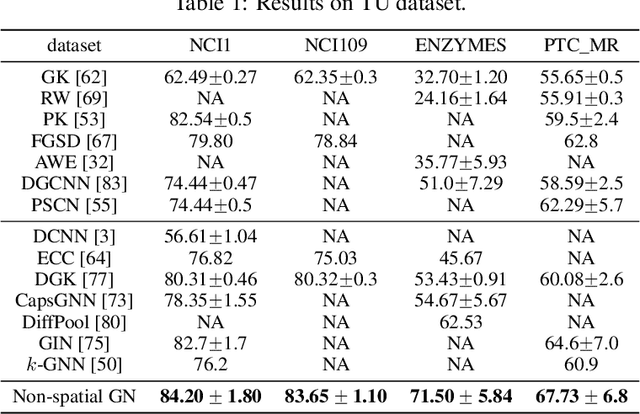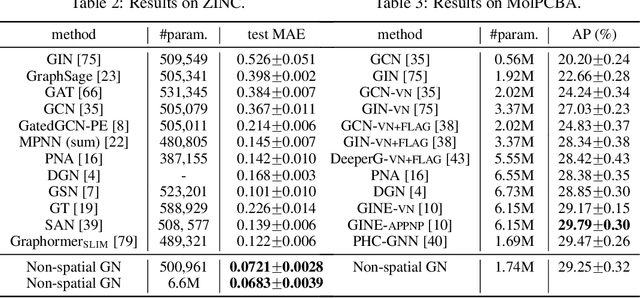Improving Spectral Graph Convolution for Learning Graph-level Representation
Paper and Code
Dec 14, 2021



From the original theoretically well-defined spectral graph convolution to the subsequent spatial bassed message-passing model, spatial locality (in vertex domain) acts as a fundamental principle of most graph neural networks (GNNs). In the spectral graph convolution, the filter is approximated by polynomials, where a $k$-order polynomial covers $k$-hop neighbors. In the message-passing, various definitions of neighbors used in aggregations are actually an extensive exploration of the spatial locality information. For learning node representations, the topological distance seems necessary since it characterizes the basic relations between nodes. However, for learning representations of the entire graphs, is it still necessary to hold? In this work, we show that such a principle is not necessary, it hinders most existing GNNs from efficiently encoding graph structures. By removing it, as well as the limitation of polynomial filters, the resulting new architecture significantly boosts performance on learning graph representations. We also study the effects of graph spectrum on signals and interpret various existing improvements as different spectrum smoothing techniques. It serves as a spatial understanding that quantitatively measures the effects of the spectrum to input signals in comparison to the well-known spectral understanding as high/low-pass filters. More importantly, it sheds the light on developing powerful graph representation models.
 Add to Chrome
Add to Chrome Add to Firefox
Add to Firefox Add to Edge
Add to Edge